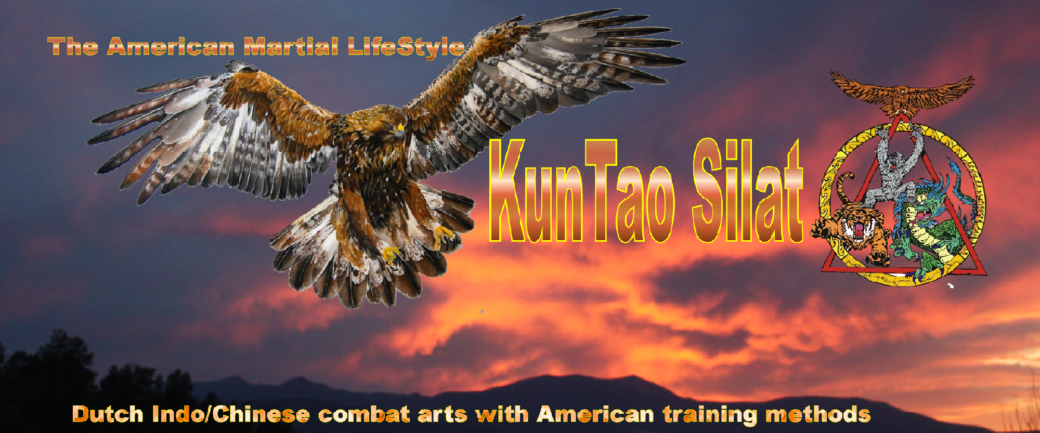It does not matter how many years or repetitions I have playing Djurus Satu. There is always so much more combat lore to mine from its depths I truly stand in awe of it. Of the various forms I have studied in 21 years of martial arts, an argument could be made for Djurus Satu being the most versatile: it is inherently meant to be personalized and explored.
Pak Steve has said Djurus Satu is a complete martial art unto itself, and he would know: it was Pak Steve who codified and standardized its choreography at the behest of Ba Pak Willem de Thouars. As such this form draws upon not only Pak Steve’s intensive studies under the De Thouars family and Grandmaster Bill Chang, but also upon his practical fighting experiences in full contact matches as a young man.
The choreography of Djurus Satu is deceptively simple. As the first form in the system it is not particularly long, yet among its catalog of gross motor movements we find the essential strikes, defenses, sweeps, throws, locks, footwork, and body mechanics of KunTao Silat on display. A trained eye may recognize component pieces drawn from the KunTao Silat precursor arts like Pentjak Silat Serak, Pentjak Silat Tjimande, and the “KunTao” versions of Classical Chinese Xingyiquan, Baguazhang, and the Northern Shaolin arts to name a few. Yet Djurus Satu presents its own system as more than the sum of its parts (and all extant martial arts are invariably derived from older systems anyways).
Commonly characterized as the “form of total destruction,” at first blush it is easy to dismiss Djurus Satu as “only” a “hard” style form teaching linear strikes delivered via a ruthless forward aggression. Yet deep study shows the spiraling and coiling full body powers of the Internal Arts delivered with Shaolin agility and superior Indonesian close quarters footwork, angling, and blade awareness. Each of these components is a devastating method respectively; collectively we find a lethal synthesis unique in the martial arts.
Many martial arts forms (Kata, Djurus, Taolu, Hyung, call them what you prefer) tend to have a specific “correct” version that the practitioner is meant to mold themselves to. This is not a bad thing: if we wish to learn the First Principles of any field we must have a starting point of knowledge to draw from. What makes Djurus Satu different from most (though certainly not all) of the forms you are likely to encounter is that the “emphasis” or “approach” to Djurus Satu can change to meet the needs of each practitioner without betraying its strategic, tactical, or technical catalogue.
Malabar players can work their explosive power and agility by adding leaps into the major strikes to cover greater distance and deliver superior kinetic force. Kicks can be head level or above to build speed, balance, and dynamic flexibility. Want better muscle development? Try performing the entire form as a continuous dynamic tension set.
For those seeking an “Internal Approach” due to age, injury, or a maturity of practice, the “silk reeling” connective tissue development typically associated with Tai Chi Chuan and Baguazhang are present with proper emphasis and mental intent courtesy of our Chang Style Qigong. Each movement can be made more “conservative” through smaller, subtler play that builds the “invisible” power seen in the Taoist arts and deadly practical in real life close quarters altercations. The ingenious leverage and entry tactics of Silat become enhanced through their union with Taoist whole body connected power.
The Chang Style Qigong stretching, breathing, and mindfulness principles invigorate Djurus Satu players, bringing about healthier circulation via increased oxygen intake and improved range of motion. As awareness develops via moving meditation, concepts related to energy (Qi) and spiritual insight become available to those with such interests.
Those pursuing the legendary blade craft of the Indonesian arts will find that adding a golok, pisau, or karambit to their play will allow Djurus Satu to teach them their fundamentals, which can then be carried into the necessary partner training.
Ultimately we find Djurus Satu to be an exceptional, holistic training technology that lays a powerful foundation of physical health and fitness, mental discipline, and martial prowess for the rest of KunTao Silat as well as being a worthy life’s pursuit in its own right.
In 2020 I undertook a challenge to practice Djurus Satu every day for six months. I encourage all of the KunTao Silat family to try this out: I think you’ll be amazed at the benefits!
My best,
Dr Jon
Discover more from KunTao Silat
Subscribe to get the latest posts sent to your email.

No comments yet.